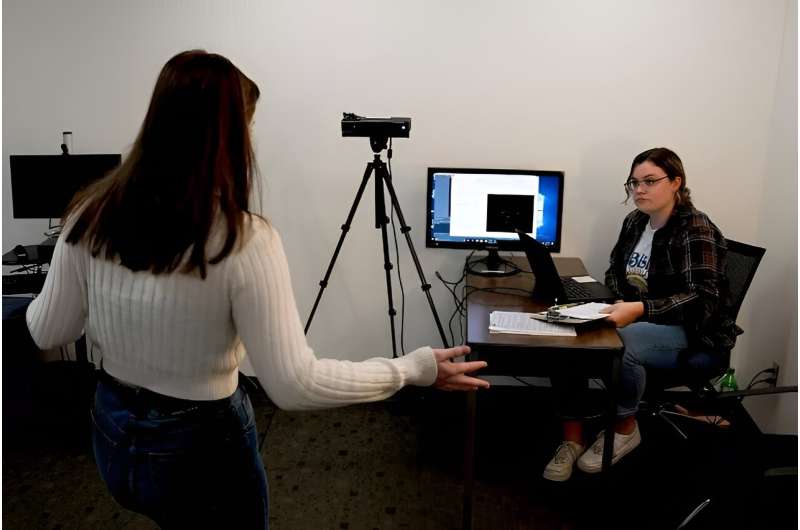This article has been reviewed according to Science X's editorial process and policies. Editors have highlighted the following attributes while ensuring the content's credibility:
fact-checked
peer-reviewed publication
trusted source
proofread
Collaborative autism study analyzes movement through computer vision technology

A collaborative research study, led by IU Columbus Associate Professor of Psychology Mark Jaime, is getting attention in the neuroscience field for its innovative study of physical movement and autistic traits.
Published in Frontiers in Integrative Neuroscience, the article "Level of autistic traits in neurotypical adults predicts kinematic idiosyncrasies in their biological movements" is part of a special issue on autism and movement.
Jaime serves as the lead investigator and senior author, yet the paper and research involves multiple IU campuses and divisions. Gregory Lewis and Mohammad Aghajani from the Department of Intelligent Systems Engineering at IU Bloomington co-authored the paper, as well as Elizabeth daSilva from the Division of Science at IU Columbus, and Surabhi Date from the Department of Kinesiology at IU Bloomington.
The research was conducted in the IU Columbus Social Neuroscience Lab using biomotion cameras and a novel technique where movements are analyzed through computer vision. The computer vision technology was developed at the Luddy School of Informatics, Computing, and Engineering, where Jaime spent his sabbatical in Fall 2023. Jaime noted that this innovative study is bringing attention to the research and has exciting potential.
"In the past, we used body sensors to gather detailed human movement data. Now, leveraging cameras and machine learning models, we can analyze microlevel movements and decipher intricate patterns and relationships among them. This approach allows for a deeper understanding of movement dynamics using advanced technology, significantly enhancing our ability to study complex behaviors in a more nuanced manner," Jaime explained.
In addition to getting much more detailed data, this technology has significant potential for growing the number of participants in future studies. Jaime noted that finding research study participants in his field has been consistently difficult—but with this new technique, participants in future studies could simply upload a video of themselves, instead of needing to come into the lab to be recorded.
The dataset for this research took about a year to collect. It studied autistic traits in neurotypical adults, including movement data in relation to personality and social features, measures of social functioning, and the impact on significant relationships, all in alignment with the National Institutes of Health's research framework for investigating neurodevelopmental disorders. Jaime is already planning additional related studies and considering future opportunities to continue publishing and presenting this research.
In spring 2024, he started an Introduction to Autism class at IU Columbus and plans to teach it again in the fall. Jaime has been researching aspects of ASD since 2002 and movement related to autism since 2007.
More information: Gregory F. Lewis et al, Level of autistic traits in neurotypical adults predicts kinematic idiosyncrasies in their biological movements, Frontiers in Integrative Neuroscience (2024). DOI: 10.3389/fnint.2024.1364249





















